Text
Conclusive Statement
This project has been a great opportunity for me to learn new skills, and I have acquired new abilities on a frequent basis which have since been ingrained in me. As a result of undertaking this project, not only have I grown intellectually and emotionally, but also my knowledge of the wider world has increased. This, I feel, is vital for any project, I am gratified that I was able to do this once again after having such a revelatory experience with the completion of the Book of Endo. I am grateful to the tutors I have spoken to and who have helped me with Noxa, as well as the resources I have accessed that have irrevocably altered my understanding of human culture and the objects surrounding them. Because of this project, I have gained insight into both my capabilities and my limitations as a creative. Despite difficult at times, the experience has been fulfilling, and it has unquestionably led me to the conclusion that I want to continue designing not only editorials, but ceramic products. On the other hand, as I have stated, I am now aware of my limits; specifically, that as a dyslexic person, I have to be more conscious of how I use my time. When writing is a struggle for you, it is easy to get absorbed in the tasks associated. But, as I have realised, I have not been able to accurately illustrate my development as I neared my conclusion. Due to the fact that I want to keep writing critical arguments and perhaps even take up journalism in the near future, I shall exercise caution in this regard. In spite of this, I am confident in my discipline and notably in the book Noxa, which I believe to be both distinct and insightful.
0 notes
Text
9th-13th June: Ceramic Gun
Despite the fact that my ceramic gun has gradually become a less significant part of my overall project, it has now been successfully fired and is prepared to be glazed. I want to glaze it white, which, although being different from the design I had originally envisioned for it, I feel would lend it an air of elegance. On Monday, June 13, it will be ready to be collected. It is unfortunate that it could not be a larger aspect of my project, and given it is so close to my deadline I may not even be able to document it, as my book had always been the dominant final outcome, but this gun will show useful when presented in my Final Degree Show.

UPDATE: The Final Product and Test Prototype


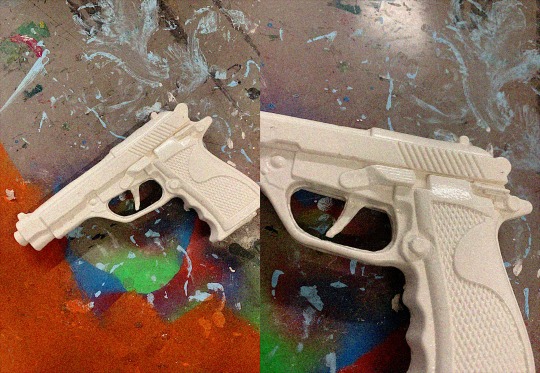

0 notes
Link
0 notes
Link
Access PNGs and the PDF (please download! Compressed PDF included)
0 notes
Text
Final Evaluation
The commencement of this project coincided with the beginning of a horrific event that I will not forget; the military conflict between Russia and Ukraine, as well as sights from the war, changed my perspective on the extent to which humanity have been desensitised to violent situations.
For a long time, I had naively believed that such strife did not exist in the Western hemisphere, yet I have since learned that violence is woven into our cultural fabric; it has become so pervasive that it is imperceptible to us, always lingering, but never acknowledged.
The Global North has embraced a capitalist economy that dismisses the realities of violence, yet my study indicates via tangible forms that institutionalism and capitalism only breed further conflict. I began my journey by immersing myself in violence, reading and watching media that I believed was particularly reflective of the human condition, such as a Soldier’s Prayer (1961) by Masaki Kobayashi, Design and Violence (2015) by Paola Antonelli, Discursive Design: Critical, Speculative, and Alternative Things (2018) by Bruce M. Tharp and Stephanie M. Tharp, and Skull Trophies of the Pacific War: Transgressive Objects of Remembrance (2007) by Simon Harrison. It became apparent to me that more we advance, the more complex and layered our perceptions of this designed world become. As a result, I began creating experimental
illustrative designs using software such as Procreate, Adobe Illustration, and SketchClub. I was of the opinion that it was appropriate to consider subjects such as the rapid and unsustainable modernisation that is taking place within our society. I began by readapting a variety of photographs that were taken during wartime provided by the British Library for public access. My first experiments were successful, and as early as March I had the realisation that there is significance in the tangible form, or rather, the object that has been designed. This is when I first started classifying forms of violence based on the physical objects involved: objects that have been designed to kill, objects that violate
ecological integrity, objects that exploit human nature, and objects that dehumanise.I decided to design an editorial for of several reasons, one of which was the fact that I had achieved a great deal of success with my Book of Endo (2022), my previous unit 9 project. Furthermore, given that I intend to commit the majority of my design career to editorial design after graduation, I was certain that this was where I was supposed to be concentrating.
My quality of inventiveness increased dramatically as a direct result of the resources that I identified, however, I did not truly expand my project until I had discovered two key references: the interactive website Made in a Free World by Slavery Footprint and Less is More: How Degrowth Will Save the World by Jason Hickel (2020). These key references supplied a critical argument and solution to my final major project, namely that not only are the riches of the Global South being plundered in an unsustainable manner, but there are modern-day enslaved workers behind our commodities. Made in a Free World provide a number of enslaved people who most likely have laboured for you, which is done in an uncomplicated, comprehensible manner, and I realised that I wanted this degree of awareness in my book. Less is More provided a solution, one that I had been searching for since the beginning, but was unable to find. Accumulation is a distinctly human habit, and I felt compelled to criticise this aspect of material culture, but how could I, given how deeply rooted accumulation is in our human culture? However, as an alternative, the degrowth paradigm provides us with better options: localisation, distribution, and dispersal of economic activity. Activists are drawn to this framework owing to the fact that it was constructed in purpose of ethical responsibility the aims of our global community overall. In regards to how I have illustrated the framework’s applicability to my audience, I believe I have done so effectively, not just through words, but also via tangible objects, the first steps to a western material culture that is ethically concious and responsible.
Onwards with the final outcome itself, I will first outline my successes. Overall, I am very pleased with the visual elements of the book, from the colours utilised to the images, silhouettes, and textures that have been employed. In contrast to my previous book, the Book of Endo, which had to be revised several times due to creative collisions, this book has a unique visual language that does not change. Designers such as Karen Lacroix and Paul Rand proved to me that colour can be utilised as a distinguishing characteristic, and I have taken this into consideration. I believe one of my greatest accomplishments has been forming a consistency between the varying visual elements. My tutor had suggested that the book could be interactive and I was able to achieve that aim by designing page 13-14, which has a mirror in the front sight icon.
In order for the reader to confront themselves and analyse their own ethics, the mirror reflects their face as they read about gun violence. One regret is that I did not employ this strategy throughout the book, since I now see that it could have served as a distinguishing feature that could potentially make the reader assess themselves and their own consumption. My personal insight as a dyslexic has improved the book, however, everyone is impacted in different ways, and although my book is accessible to a decent majority, my neurodivergent peers have stated that the thin writing against a vividly coloured backdrop caused them difficulty reading. I utilised coloured overlays as a child to enhance my reading experience, and it was one of the reasons for why I decided to use a coloured backdrop.
This revelation was humbling to me, and as a result, I have begun to consider approaches in which I can improve my reading biases. One of these first steps has been using a black background for my folio.
As well as this, I had to lower the pixel quality for the folio, and it has exposed to be that unless the pages are at their highest quality, the writing may be difficult to read. Fortunately, the physical book has a good readability, as it was printed at the quality it is meant to be at. It is unfortunate that I could not demonstrate this fully through the mock-ups due to the MB folio limit, but I am pleased with how far I have progressed in terms of typography and this is merely an experience that I will take into consideration for future projects, the lesson being regular text density is better if you want to publish the editorial digitally and at a low or moderate compression level.
In terms of writing, I feel I have demonstrated effectiveness of outlining the good, bad, and ugly of material culture. The use of credible reference sources has enhanced the quality of my work and has shown me that academic writing and design operate synonymously. In conclusion, I have succeeded with the broad and conflicting subject I have chosen, and despite the considerations outlined, I believe I have accomplished my goal.
0 notes
Text
Week Beginning 30th May
As a follow-up from the previous week, several modifications were made as a necessary result of the final tutorial. She began by providing an overview of grammatical errors as well as content that was missing. She reccoomended to work on filling the holes in the introduction so that the purpose of the editorial would be made clear. For instance, clarify it is documenting a variety of harms. Because of this, I felt compelled to write more for the introduction, in which I write as follows:
According to the British Museum, the body on the right is not human. From the manner in which this mummy is displayed to its categorisation on the museum's website, this is considered an object. I was unsettled by this, as I hope my readers are as well; it prompted me to consider the implications that one's perception of an object can aspire. When a human body is classified as an object, it creates a form of indifference. Unbeknownst to us, yet fact, objects are harmful. Noxa (meaning to harm in Latin) is an anthology of harm in the tangible form, including objects that have been designed to kill, objects that violate ecological integrity, objects that exploit human nature, and objects that dehumanise.
In addition she suggested that I should consider making content more digestible to readers, such as when I mention circular economy, I should first explain what a circular economy is.
In addition, she said I should conclude by detailing why I selected the objects at the end, or possibly showcasing an object of solution to every object of harm. Since they reflect the degrowth paradigm and are opposed to accumulating commodities, I have written more about this in order to avoid confusion; I wanted to convey that we do not need to depend on capitalist growth if we utilise these objects as self-fulfilling tools. I have rewritten particular sections in order to emphasise this, such as clarifying on page 57 that mycelium could be potentially grown at home or locally, rather than suggesting that we should all purchase costly furniture from Phil Ross.
Finally, when addressing violent objects, such as guns, I should use softer language so as not to imply that all Americans are violent. I have attempted to soften my tone when addressing this issue, but for some parts, such as when I call the electric chair a uniquely American device, I have not changed my writing; it is not my intention to criticise American culture, rather, I am referring that the electric chair is an object that can be found nowhere else. In fact, the Philippines is the only other country that has ever employed its use. I spoke to my tutor about this, and she informed me that referencing is an option for me to consider if I want to maintain the same tone. Apart from that, I have corrected my tone in many parts of my writing, such as where I once said:
In my eyes, their welcome was contradictory, but to the the average American, especially to older generations, it is a safety measure, a precautionary step.
I have corrected it to:
In my eyes, their welcome was contradictory, but to some Americans, especially to older generations, it is a safety measure, a precautionary step.
Or, when I discuss the possibility that firearms may find their way into the wrong hands, I have changed certain words so that I focus more on critiquing institutions such as the police rather than the average citizen of the United States.
To view what has changed can be accessed here
Following the completion of this tutorial, not many modifications have been made to the editorial in a creative sese. However, the photograph that had been advertised as public domain had to be replaced after I learned that it belonged to a website that had copyright laws in place; I do extensive research into the photographs that I adapt, so I was disappointed that I had not realised this earlier in the process. In light of the fact that I only have so much time available, I have decided to replace the image of the Gebelein man that appeared at the beginning of my introduction with one that I obtained from an account on Flickr advertised as creative commons. Below is the before and after.
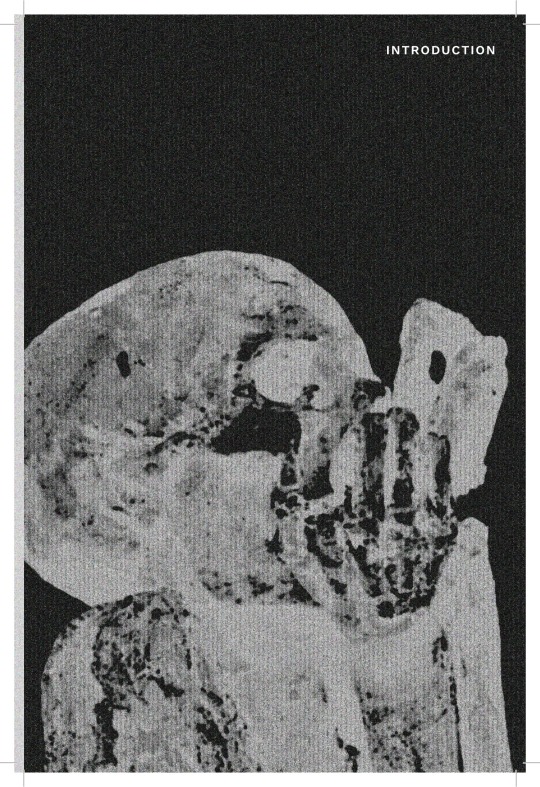
Orginal image belongs to Archeology Wiki

New image, original belongs to:
The Gebelein Man. (2014). Flickr. [Online]. Available at: https://www.flickr.com/photos/radiowood/15170026254/in/photolist-p7wmhN-sm2deq/ [Last accessed: 3 June 2022]. PUBLIC DOMAIN / CREATIVE COMMONS.
0 notes
Text
Week Beginning 23rd May
This week's focus has been on finding tangible solutions to accumulation as an ethical and societal disease. I have previously discussed the opportunities that may arise from a degrowth economy, but as this editorial features objects of harm, why not showcase objects of good? Or at least, objects that can be utilised as such. Concurrently, I have designed the third instalment of my editorial, Museums and the Ethical Considerations of Preservation and Ownership.
Below is an additional presentation that will outline my progress from this week. Unfortunately, as the deadline nears closer, I have not been able to document as much development. Otherwise, I would have included more early designs.
Access the slideshow here.
As a means of reflection, I will now highlight some of the most significant developments that have taken place during this week.
The photographs that I taken the prior week at the British Museum have been altered by me for the purpose of facilitating an impression. The geometric pattern I have employed on the pages below are meant to symbolise erasion, if the British Museum continues to hold these artefacts for themselves, what will be the implication on Nigerian culture? Given the significance of these artefacts, there will continue to be a gaping hole in their history and social heritage. For this, I have purposefully made it difficult to recognize them in these images, utilising gausian blur, grain, and a geometric image tool.
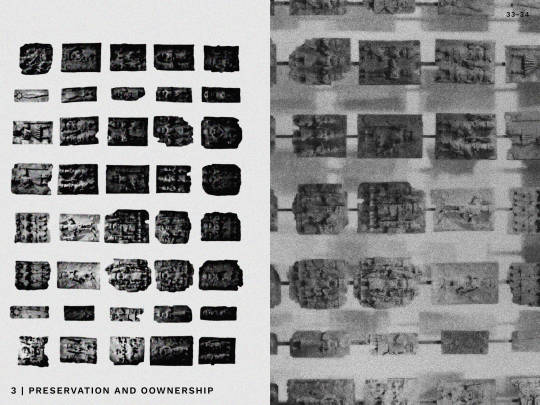
Obscurity has played a large role in this section of my book, from the Benin Bronzes to Minstrel memorabilia, knowing how traumatic these visuals may be to readers, I decided to obscure many of the visuals seen.Continuing with Sarah Baartman, I had initially intended to display the entire of the plaster cast on a blue background. However, it occurred to me quite quickly that if I were to display her fully casted body, which is so lifelike, would I be objectifying her as well? If I were to present her cast without making any effort to respect her memory, I would be no better than those who humiliated her. Dignifying Sarah Baartman then became important to my design process, not because bodies are inherently sexual and should be seen negatively, rather, I do not have her consent to showcase her cast. This is why this plaster cast, an object is the only one that is not framed as such, a decision I do not regret making.

I debated whether or not to end with the Jim Crow Museum due to the obvious sensitivity of the subject matter, but I came to understand the relevance of these objects through Dr. Pilgrim, a black sociologist who believes the preservation of these artefacts are necessary for cultural progress. The objects I chose are two commodities that are part of the Jim Crow Museums collection, an untitled fish hook and a knick-knack that depicts Hollywood actor Al Jolson in blackface. I made the decision not to comment on these objects via my writing, instead, they are merely shapes that take up space on the page; I chose to do this as I recognise that certain readers may be disturbed by their presence and disturbing social function during the Jim Crow period.

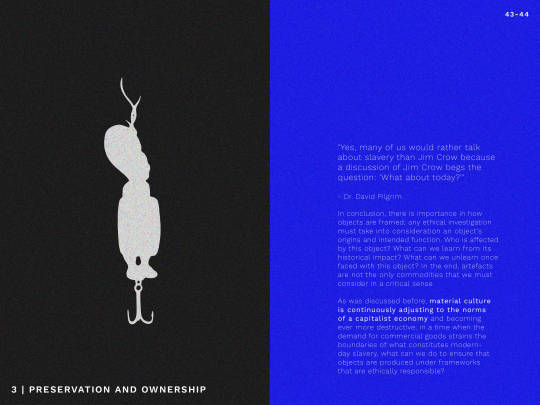
Overall, I am glad I was able to overcome these obstacles throughout my design process via reflection. It enabled me to detect possible biases in my writing and visual language. As a creative person (as well as a researcher), it is essential to continually examine on your creative activity.
Weekend
Following on from the working week, the primary focus of my attention this weekend has been on the layout of the final segment of my book. This segment features examples of objects that, in my opinion, notably exemplify the values and objectives of the degrowth and circular economy. At first, it was difficult to convey the possibilities of these frameworks via objects, yet I have realised these objects do not have to be spectacular, rather, what makes an object good is how and what way it influences our actions, how we connect with it, and its global footprint.
Efficiency saves resources: I have selected objects that we may put to good use on a daily basis, and instead of influencing us to buy more (as we have determined from the fashion industry), these objects encourage us to be more productive with ourselves. However, not all of these objects have been designed with sustainability in mind, the spade, for instance, may be used in a manner that is counterproductive to the cause of sustainability, yet this brings the realism to my project. Although we may provide a slew of sustainable alternatives, what will and truly make a difference is our collaborative effort. The general populace should not be held entirely responsible for the state of the world; rather, it is our corrosive economic systems. I hope my book exposes how our culture, which has been modelled after capitalism, will come to end us if we do not act soon.


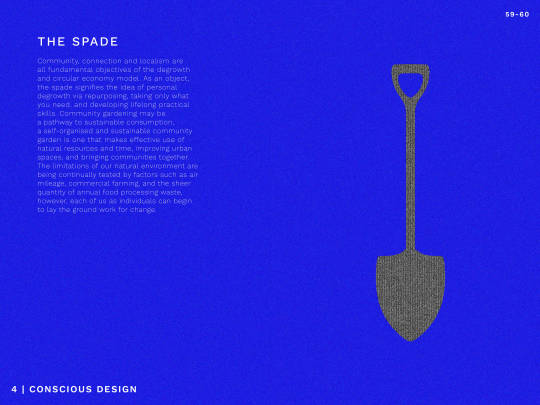
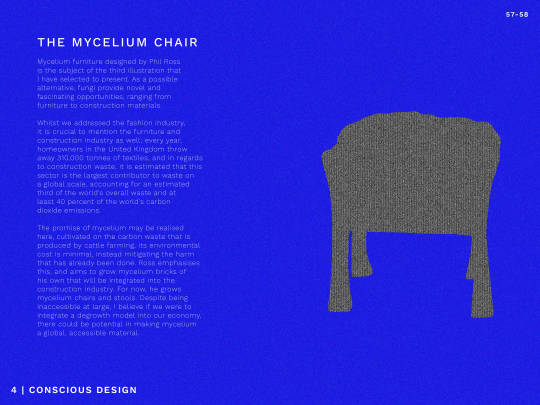
0 notes
Text
Week Beginning 16th May
The majority of this week has been devoted to my creative practice, having begun the process of designing with Adobe Indesign since the 9th (it is now the 22nd). I am glad that I have been able to organise and format this quantity of material, and at this stage there are just two more parts for me to complete. I believe this is as a result of the fact that the design of the editorial has been kept consistent throughout, with an emphasis placed on the silhouette of objects; in other words, I have built on a visual process that is effective. Regarding the written content of the editorial, it is now complete.
To summarise, there have been many changes made to the editorial, such as smaller text and a more defined text hierarchy; similarly, I have had to assess whether the visuals I have designed will integrate well with my book. In addition to the introductory page graphic, which was originally taken from the British Library (public domain), images of the electric chair at Auburn State Prison and a portrait of George Stinney have all had to be reworked indefinitely (erased/modified images marked with a red box on my google slides presentation). In conclusion, I aim to complete the book by next week.
Due to the large amounts of MB required for these pages, I have prepared a Google slides presentation for viewing. You may access it here.
Written Work
Decolonising nature, cultures, and societies, as emphasised by Jason Hickel in his book Less is More: How Degrowth Will Save the World (2020), are the preconditions for the possibility of a common, viable future. We must minimise the resources we extract from the ecosystem in order to ensure a future for ourselves and the generations to come. He believes that economic systems ranging from early industrialisation to current capitalism have conditioned us to perceive nature as a separate entity, comprised of raw resources to be exploited and processed into consumer good; In an era where we are straining our ecosystems to the verge of extinction, he asserts that our society has reached a stage wherein 'growth' is synonymous with devastation.
“All living organisms grow. But in nature there is a self-limiting logic to growth: organisms grow to a point of maturity, and then maintain a state of healthy equilibrium. When growth fails to stop – when cells keep replicating just for the sake of it – it’s because of a coding error, like what happens with cancer. This
kind of growth quickly becomes deadly.”
- Jason Hickel
Degrowth is a predetermined decrease in energy and resource use that is intended to bring the economy into proportion with the living environment in a manner that lowers greenhouse emissions and pollution (Hickel, 2020). Moreover, it offers a chance to develop new production processes that are not rooted in modern-day slavery. Mass manufacturing breeds exploitative labour, whereas low-scale production helps to improve communities and the lives of citizens. The degrowth economy is a model that provides stabilisation and support where the circular economy, a widely recognised ecological model, has failed to safeguard the Global South.
Regarding ecological sustainability, the circular economy functions by circulating repurposed materials, manufacturing endurable products designed for the long-run, and reducing waste to the greatest extent feasible, but there is a tendency to limit the concept of circular economy to a discussion about resource usage, lacking a debate of how the concept will lead to greater social mobility for marginalised communities in the West and those in the Global South.
We may, however, be able to achieve harmonisation if we integrate the degrowth methodology with the circular economy model, merging them as one paradigm. A firm repudiation of capitalism is articulated by the degrowth model, which the circular economy would need to adapt if it is to solve its lack of strategic guidance and ethical concerns.
It was concluded by a research team from the Department of Chemical and Biomolecular Engineering, University of Cantabria, that both models may be able to ameliorate one another's limitations; CE can be reformed and its humanitarian responsibilities addressed via the degrowth model, whereas the circular economy model can enhance economic growth in the Global South (Hoehn, Laso, Margallo, Ruiz-Salmón, 2021).
One criticism of the degrowth model is that socioeconomic disparities are still prominent. Global equality could be achieved via the deployment of a degrowth-informed circular economy, supporting the economic growth of the Global South (Hoehn, et al, 2021), whilst reducing the adverse effects of the Global North's consumption.
0 notes
Text
Week Beginning 9th May
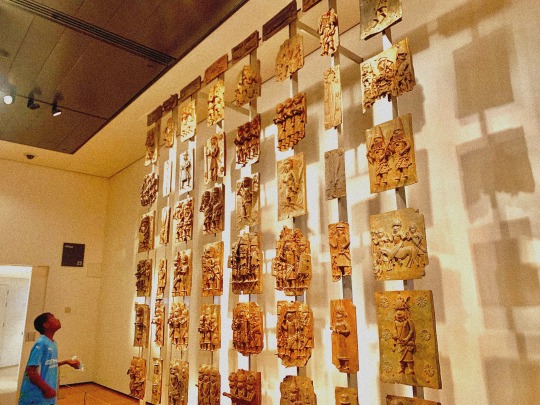
The Benin Bronzes. Photograph taken a week prior.
This week's progression has been gradual but consistent. I have been building on my creative practice by designing graphics and commencing the initial stages of working with indesign, whilst continuing to write the solution-based portion of my editorial. Following on with the critiques from Tuesday’s session, I have edited the typeface I had designed last week, giving each letter a similar width and length, with the exception of the letter 'O,' which now has a more striking contrast. Satisfied with the results, I began designing with my new typeface, placing it on the photograph of the Gebelein man I had taken the previous week. Grain, contrast, and a linear effect have all been utilised in order to give the book the illusion of having been printed by hand.
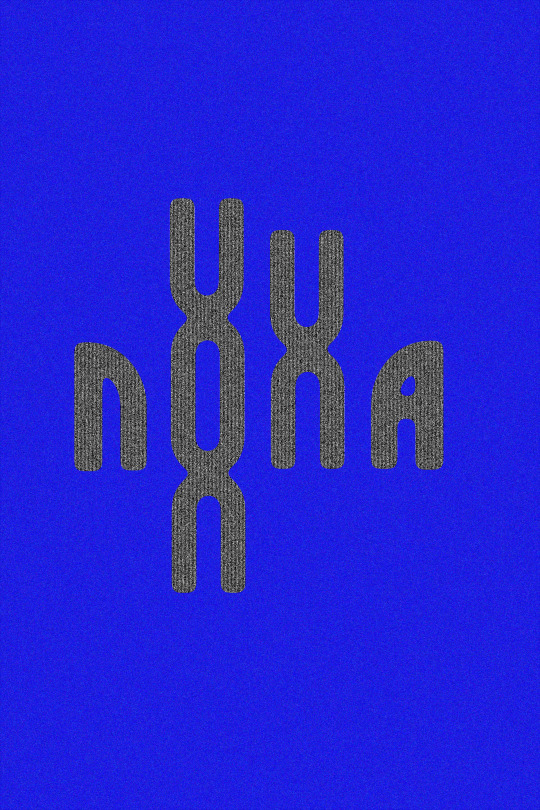
Before modifying typeface.
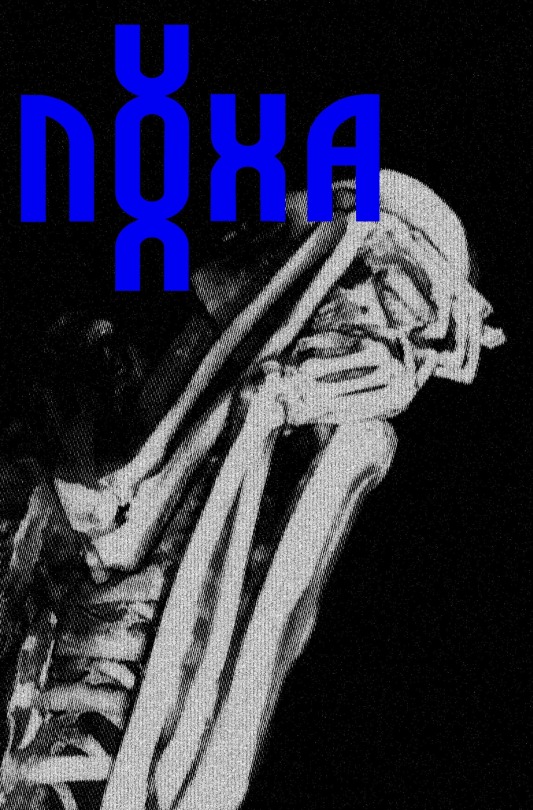
After correcting width and height.

Experimenting with grain and linear effects.
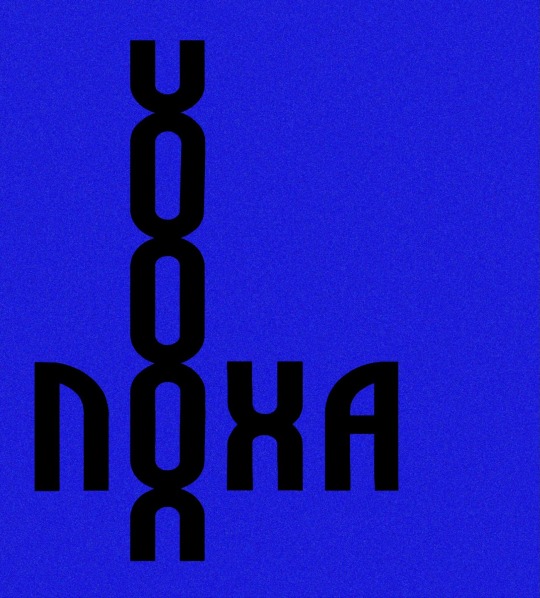

Testing a combination of black and blue. I came to the conclusion that it would be quite difficult to read since the contrast between the black text and the hex code #1822cd is not strong enough.
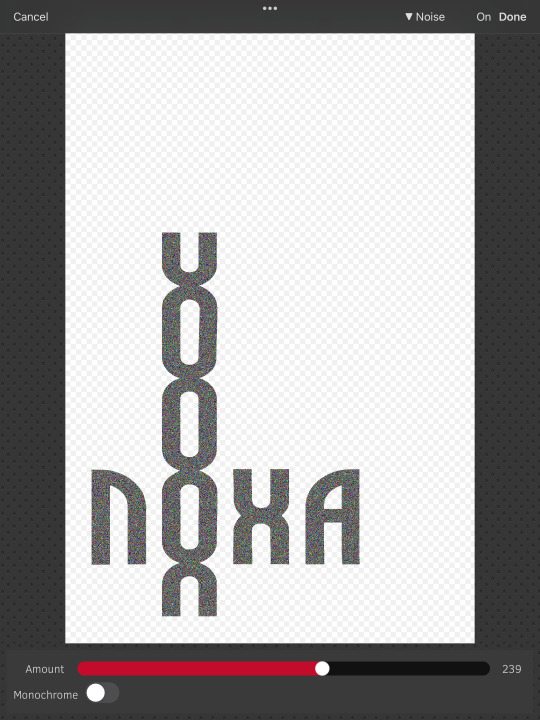
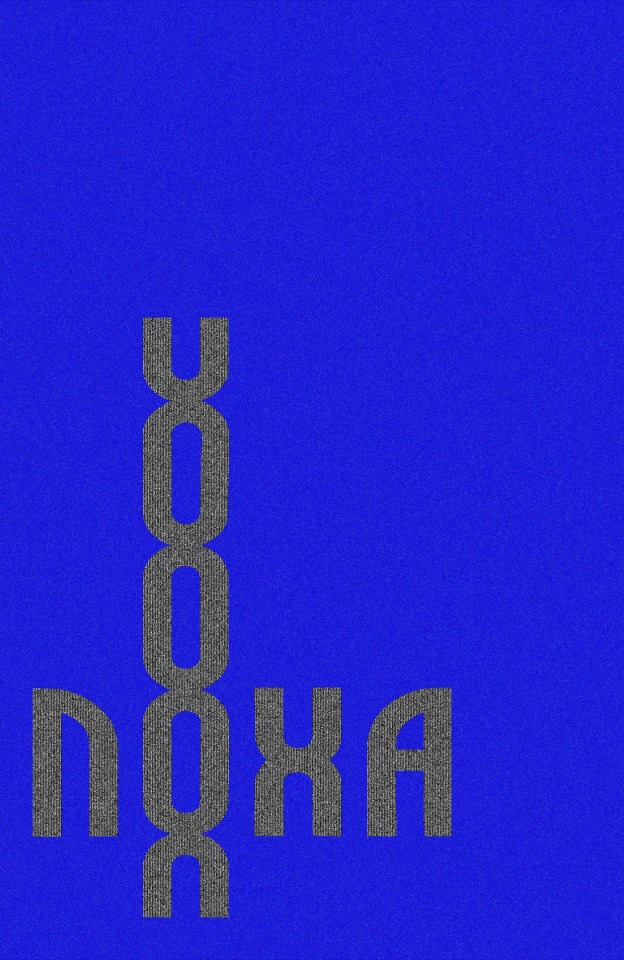
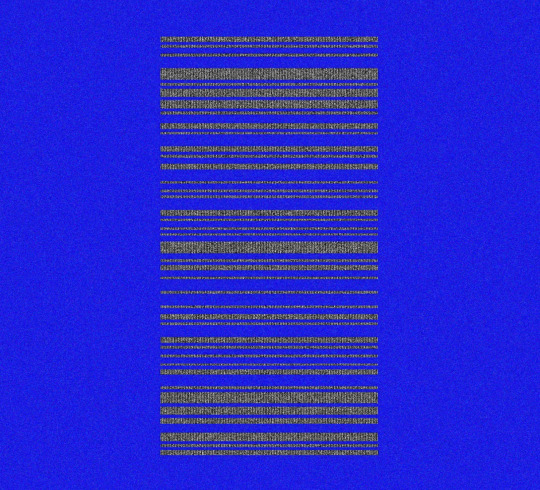
More noticable contrast, and it has a more visually appearing texture.
Final product(s)
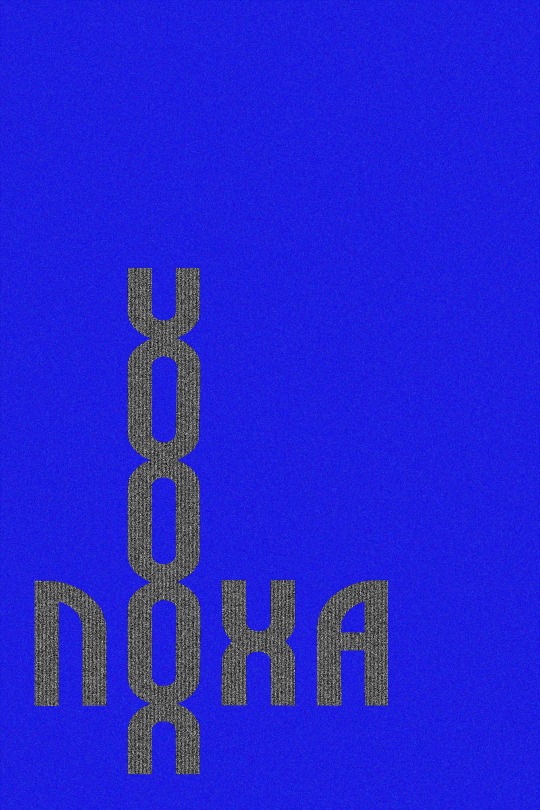

Writing
I have began to put together a reference list this week. In order to compile this list, I used a document I had created specifically to keep track of top of my references, which includes all the copy and pastes of research materials I have used for this editorial. As the deadline nears, I believe I will begin designing the ediitorial now, rather than waiting until I have finalised my draft. I have also supplied an unfinished draft of the writing I have done this week concerning degrowth and the circular economy. This week, I have been listening to Jason Hickel’s audiobook Less is More: How Degrowth Will Save the World (2020). He raises several relevant points, including the importance of deconstructing our harmful economic systems and providing sustainable growth to the Global South The North, however, must be selective about their growth, avoiding systems that will constitute to modern day slavery.
Reference List
1. A World of Waste. (2022). The World Counts. [Online] Available at: https://www.theworldcounts.com/challenges/planet-earth/state-of-the-planet/world-waste-facts/story [Last accessed: 12 May 2022].
2. America's Gun Culture - In Seven Charts. (2022). BBC News. [Online] Accessible at: https://www.bbc.co.uk/news/world-us-canada-41488081 [Last accessed: 12 May 2022].
3. Anglis, J. (2021). George Stinney Jr. Was The Youngest American Ever Put To Death In The Electric Chair – Then His Conviction Was Overturned. ATI. [Online]. Available at: https://allthatsinteresting.com/george-stinney-jr [Last accessed: 12 May 2022].
4. Antonelli, P. Et al. (2015). Design and Violence. Pp. 9. New York, New York. The Museum of Modern Art.
5. Avena, N.Et al. (2007). Evidence for Sugar Addiction: Behavioral and Neurochemical Effects of Intermittent, Excessive Sugar Intake. [Online]. Available at: https://www.ncbi.nlm.nih.gov/pmc/articles/PMC2235907/ [Last accessed: 12 May 2022].
6. Boadle, A. (2018). Brasilia Closes Latin America's Largest Rubbish Dump. Reuters. [Online] Available at: https://www.reuters.com/article/us-brazil-dump-idUSKBN1F82VI [Last accessed: 12 May 2022].
7. Briggs, W. (2017). How America Got Its Guns: A History of the Gun Violence Crisis. Introduction, pp. 3-14. Albuquerque, New Mexico. University of New Mexico Press.
8. Major Brands Implicated in Report on Forced Labour Beyond Xinjiang - Business & Human Rights Resource Centre. (2020). Business & Human Rights Resource Centre. [Online]. Available at: https://www.business-humanrights.org/en/latest-news/major-brands-implicated-in-report-on-forced-labour-beyond-xinjiang/ [Last accessed: 12 May 2022].
9. Essig, M. (2005). Edison & the Electric Chair: a Story of Light and Death. New York, New York. Walker & Co. Chapter 18, pp.1-6.
10. Hickel, J. (2020). Less is More: How Degrowth Will Save the World. Audiobook, Audible.
11. Hickel, J. (2020). What Does Degrowth Mean? A Few Points of Clarification. [Online] Available at: https://www.tandfonline.com/doi/full/10.1080/14747731.2020.1812222 [Last accessed: 12 May 2022].
12. Hoehn, D. Et al. (2021). Introducing a Degrowth Approach to the Circular Economy Policies of Food Production, and Food Loss and Waste Management: Towards a Circular Bioeconomy. [Online] Available at: https://www.mdpi.com/2071-1050/13/6/3379/htm [Last accessed: 12 May 2022].
13. Holmes, R. (2007). The Hottentot Venus. Introduction, pp. 1-4. London, Britain. Bloomsbury Publishing.
14. Jones, M. (2021). Benin Bronzes: My Great-grandfather Sculpted the Looted Treasures. BBC News. [Online]. Available at: https://www.bbc.com/news/world-africa-59065274 [Last accessed: 12 May 2022].
15. Levene, D. (2021). Colonialism Had Never Really Ended: My life in the Shadow of Cecil Rhodes. The Guardian. [Online]. Available at: https://www.theguardian.com/news/2021/jan/14/rhodes-must-fall-oxford-colonialism-zimbabwe-simukai-chigudu [Last accessed: 12 May 2022].
16. Lopez, O. Jacobs, A. (2018). In Town With Little Water, Coca-Cola Is Everywhere. So Is Diabetes. The Guardian. [Online]. Available at: https://www.nytimes.com/2018/07/14/world/americas/mexico-coca-cola-diabetes.html [Last accessed: 12 May 2022].
17. Morris, P. (2021). Sentenced to Death, but Innocent: These are Stories of Justice Gone Wrong. National Geographic. [Online]. Accessed last: https://www.nationalgeographic.com/history/article/sentenced-to-death-but-innocent-these-are-stories-of-justice-gone-wrong [Last accessed: 12 May 2022].
18. Mott, T. (2020). Here’s What to Know About George Stinney’s Wrongful Execution in 1944. The Grio. [Online]. Available at: https://thegrio.com/2020/06/16/george-stinney-execution-south-carolina/ [Last accessed: 12 May 2022].
19. Otte, M. (2019). H&M’s Green Initiative is a Scam. Medium. [Online]. Available at: https://medium.com/@ameliaotte/h-ms-green-initiative-is-a-scam-73bc23fe94 [Last accessed: 12 May 2022]
20. Patil, V. (2018). Marketing Strategy of Coca Cola. IOSR Journal of Business and Management. [Online]. Available at: https://www.iosrjournals.org/iosr-jbm/papers/Conf.ADMIFMS1808-2018/Volume-1/12.%2077-85.pdf [Last accessed: 12 May 2022].
21. Pilgrim, David. (2012). The Garbage Man: Why I Collect Racist Objects. Ferris State University. [Online]. Available at: https://www.ferris.edu/HTMLS/news/jimcrow/collect.htm [Last accessed: 12 May 2022].
22. Ragusa, A. Et al. (2021). Plasticenta: First Evidence of Microplastics in Human Placenta. Environment International. (Volume 146). [Online]. Available at: https://www.sciencedirect.com/science/article/pii/S0160412020322297 [Last accessed: 12 May 2022].
23. Rupertus, E. (2016). Suppressors: The History. NRA. [Online]. Available at: https://www.nrablog.com/articles/2016/10/history-of-suppressors/ [Last accessed: 12 May 2022].
24. Strachan, A. (2019). Design Manipulation and Ethics. Medium. [Online] Available at: https://medium.com/designstudies1/design-manipulation-and-ethics-b4da916fe555 [Last accessed: 12 May 2022].
25. The Editors of Encyclopaedia Britannica. (2020). Rosetta Stone. Encyclopaedia Britannica. [Online]. Available at: https://www.britannica.com/topic/Rosetta-Stone [Last accessed: 12 May 2022].
26. Van der Walt, P. (2013). The History of Rifle Sights. [Online]. Available at: https://africanhuntinggazette.com/the-history-of-rifle-sights/ [Last accessed: 12 May 2022].
Draft
Our investigation has focused on violence in its most devastating manifestations, as well as the ruin that accumulates from the birth and death of commodities. There has been a particular emphasis on the design of deceptive marketing and how it takes advantage of our human nature, monopolising
the manner in which humans interact with products and services. Despite its evident disadvantages, material culture is an indisputable component of our lives that will require more time to alter; objects are the embodiments of our nonmaterial past that illustrates how our beliefs, institutions, and knowledge have been established over hundreds of years.
Is it possible, therefore, to rconsider how objects are brought into existence?
Moreover, how we consume?
“Reducing resource use removes pressure from ecosystems and gives the web of life a chance to knit itself back together, while reducing energy use makes it much easier for us to accomplish a rapid transition to renewables before dangerous tipping points begin to cascade. This is called ‘degrowth’– a planned downscaling of energy and resource use to bring the economy back into balance with the living world in a safe, just and equitable way.”
- Jason Hickel
Experimenting with Silhouettes
Recently, I have been considering the varied ways in which I may display the objects that I have selected to showcase, and after contemplating my options, I have come to the conclusion that one of the most promising possibilities could be to make use of the objects' solid silhouettes. Today, I experimented with the shape of the handgun, and I am quite pleased with the outcomes. It draws attention to the object's key characteristics, and to further support this choice of visual assistance, it contributes to improving awareness for critical matters, such as the existence of racist artefacts and symbols, without explicitly presenting said traumatic objects. This week I have been developing these visuals, continuing to adapt the linear effect, as shown previously.

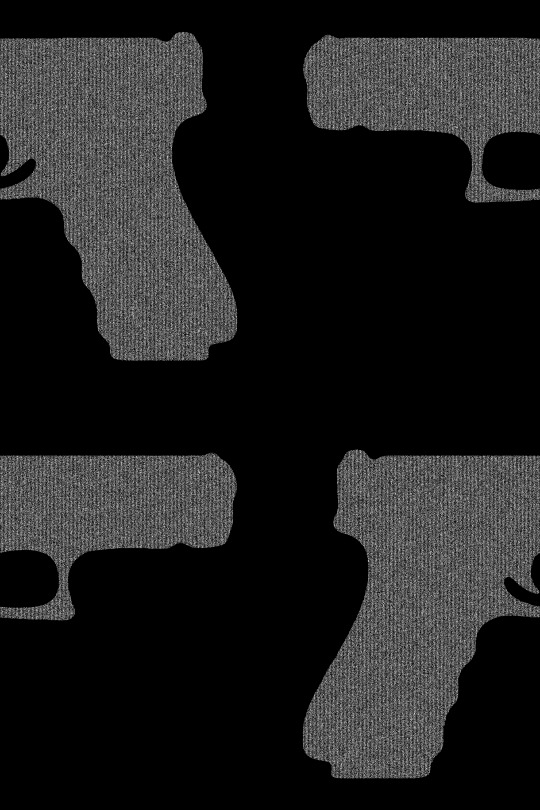
Final product

I replicated this method with multiple objects, ranging from the handgun to the Coca-Cola bottle, as I favoured the intense blue backdrop paired with the line screen effect. I used the same approach with my designed typeface and illustrative patterns, and after considering how using a photograph of George Stinney Jr. may be too exposing, I drew an illustration of Stinney only using an outline of his side profile. However, I soon came to improve this illustration, as you will see in my tutorial notes. I eventually improved my understanding and changed the background.

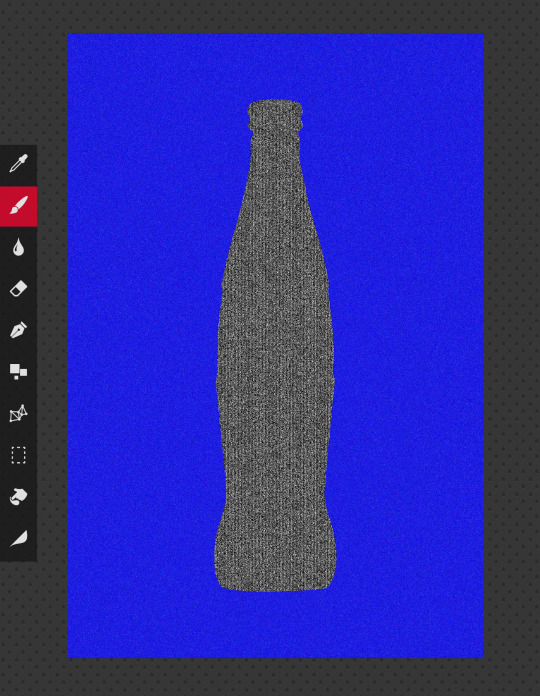
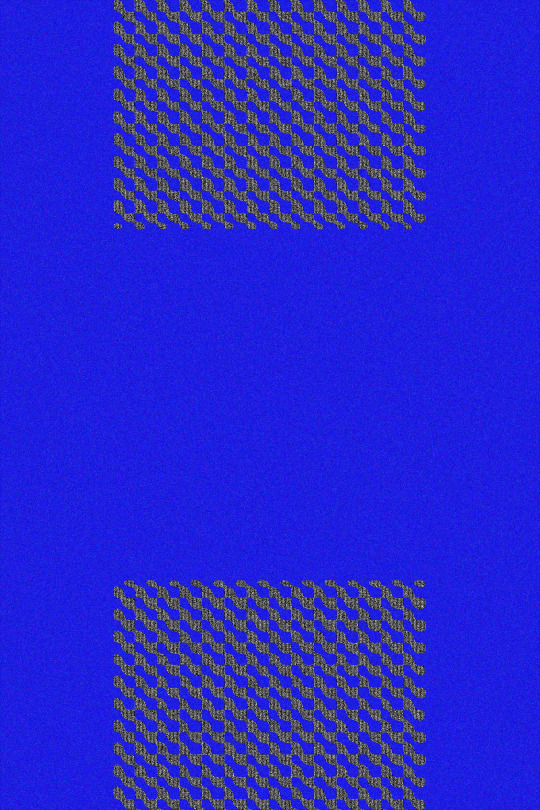
Additional Experiments (Will Not be Used for Editorial)
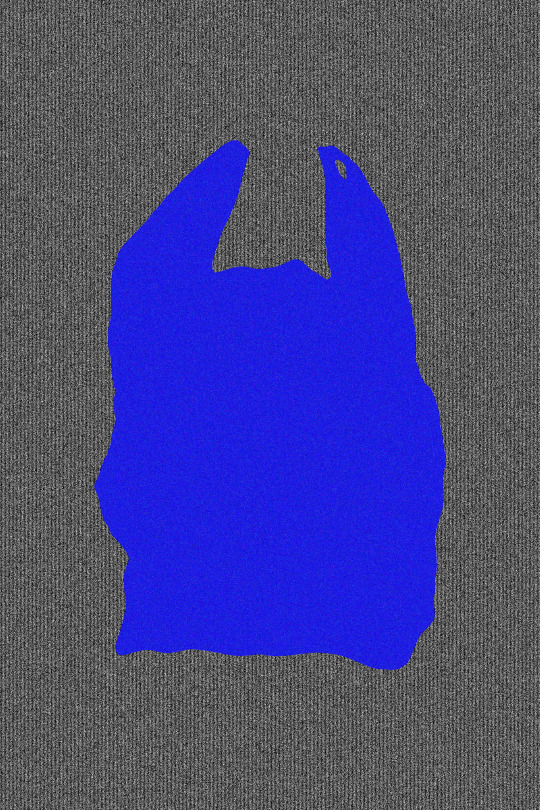

Tutorial
- Change George Stinney Jr. portrait background, may implicate George Stinney Jr. is an object.
- Change Coca-Cola bottle piece, this does not relate to writing.
- Work on a tangible solution.
0 notes
Text
Week beginning 2nd May
Minimalism
The adoption of a minimalist lifestyle may hold substantial potential for promoting degrowth in terms of limiting consumption and nurturing ideological frameworks that aid in improving individual growth. However, having done research into minimalism, my support has gradually changed to criticism of the minimalist lifestyle. In many respects, minimalism can be reduced to an extension of capitalism that conceals itself as counter-culture. Reading Against Accumulation: Lifestyle Minimalism, De-growth and The present Post-ecological Condition has helped me understand ecological frameworks in number of ways, firstly, it established to me that minimalism is a discipline of luxury that is more akin to personal brand and wellbeing. Secondly, minimalism continues to operate under a capitalist economic model, as the preceding quote demonstrates. The majority of minimalists still consume ethically ambiguous products via the capitalist market, albeit in a selective manner. My third and final praise for this academic piece stems from the fact that it introduced me to the concept of degrowth. I was undecided as to whether or not minimalism was the economic and diplomatic model that I required, yet degrowth presents itself as a necessary prelude both as an economic model and as a protest movement.
“Techniques proposed are versatile and involve, for example, the organized de-cluttering of private homes from accumulated material goods; the reorganization of households according to minimalist aesthetics; the selective reduction of work, communication, and social commitments to free up personal time; as well as the general ‘economization’ of individual lifestyles according to priorities of ‘what really matters in life.’” - Miriam Meissner, Against Accumulation: Lifestyle Minimalism, De-growth and The present Post-ecological Condition (2019)
“Interestingly, however, the book simultaneously advertises different forms and objects of consumption. In particular, Sasaki praises technological gadgets that allegedly facilitate a light and minimal lifestyle. For him, the objects appear to qualify as minimalist because they either replace an object of everyday use with a smaller or foldable one (e.g. a Sony head-mounted viewer instead of a TV), or because they combine the function of different objects in one. The book advertises products and devices quite specifically by providing brands and product names (e.g. the Sony MDR-1ADAC headphones, a Hobonichi Techno planner, etc.). This tendency becomes particularly obvious in the multiple passages of the book that praise Apple products, such as the following: The American company Apple has an intriguing connection to the minimalist culture of Japan. Many minimalists are fond of Apple products and of Apple’s founder, Steve Jobs. The products that Jobs created always avoided excess. The iPhone only has one button, and you don’t have to worry about being stuck with a lot of extra wires and ports when you buy a Mac … . (p. 43).” - Miriam Meissner, Against Accumulation: Lifestyle Minimalism, De-growth and The present Post-ecological Condition (2019)
Meissner, M. (2019). Against Accumulation: Lifestyle Minimalism, De-growth and The present Post-ecological Condition. Academic paper.
Writing Update
In response to visiting the British Museum, I have written more concerning dehumanisation and how instituions may condemn such harmful practices in the present day via objects...
4 | Museums and the Ethical Considerations of Preservation and Ownership
In addition to disposing of solid waste, the West has exploited the Global South in a variety of other ways. Preservation is a distinctly human fixation; human beings are frequently preserving history, whether it be personal (photo albums, selfies, micro-blogs) or monumental (non-fiction, archiving documents of importance, documentaries), all humans, to some degree, are archivists. Objects are particularly evident in history, in fact, anthropologists often use intangibles to piece together historical narratives; as a result of cultural artefacts such as the Rosetta Stone, Egyptologists have been able to better interpret hieroglyphic text by directly translating it from the other languages scripted, such as Ancient Greek. Humans now have a firm understanding of how the Ancient Egyptians lived, all from one object (Encyclopaedia Britannica, 2022). The continuous and varied observations of material culture have been investigated in museums for a great many years, however, the preservation of artefacts has its own set of ethical considerations. Museums have a lengthy history of systemic oppression and colonialism, and they ultimately indicate that ownership and sense of entitlement is still a prevalent issue in the West, from the theft of cultural artefacts to the exploitation of the human body and treating it as an exhibit. Institutions' display of such objects suggests the narratives of the victors, and whilst the cultures exploited may be seen, they are not truly heard. For example, the Benin Bronzes exhibited at the British Museum, specifically the bronze plaques, are essential to the study of Nigerian history, as they serve as historical records. Created sometime during the 16th century in Benin (present-day Nigeria) before the nation had an official written language, they are a unique insight into the lives of affluent Nigerian figures and the society of Benin. However, these exquisite artefacts have a sordid background. The bombardment of Benin began on the 9th of February, 1897, during the height of the Scramble for Africa (1884-1914). Many relics, among them the Benin Bronzes, were taken from the traditional palace and brought to the British Museum, where they reside more than a century later; the people of Nigeria may never see their own cultural relics outside of Britain, as they continue to serve as 'cultural ambassadors' at the British Museum (Jones, 2021).
Sarah Baartman Plaster Cast
Sarah Baartman (1789-1815) was a South African woman from Gamtoos River, now known as the Eastern Cape, who was forced to entertain paying audiences at venues in London, Paris, Amsterdam, and various other cities until her death on December 29th, 1815. She was branded as 'Hottentot Venus' (hottentot is outdated; the tribe to whom she belonged to are known as Khoikhoi) for her body, which was made a spectacle once again when a plaster cast of her corpse (casted by naturalist Georges Cuvier) was shown at the Musée de l'Homme, which remained as a public exhibit as recently as 2002 (Holmes, 2008). Since being returned to South Africa, the plaster cast serves as a reminder of colonialism, the exploitation of black women, and the economic injustices they experienced. The plaster cast of Sarah Baartman is detrimental as it proves unequivocally that even in the 21st century the bodies of ethnic minorities were seen as little more than exotic curiosities and fetish objects. Sarah Baartman was not the only victim of this cruel conduct; the Musée de l'Homme is partially accountable for the expansion of scientific racism in the West, calling into question whether museums can truly reform deeply institutionalised ideologies. One such instance is the dispersion of busts that were originally used to propagate phrenology; these concepts established the basis for racial hierarchy and were extensively employed in the late nineteenth and early twentieth centuries to standardise racial inequalities in European and American culture. Furthermore, this only reinforces the implication that commodities may be utilised as hegemonic tools for ignorance.
This section of the book was intended to criticise ownership as a Western fixation, and how it often culminates in harm. I critiqued museums, yet this is a concern that extends into consumerism and our greater culture; consider cultural appropriation, a contentious factor of materialism, as well as the ways in which popular culture attempts to profit off the labour and cultures of marginalised communities.
Regarding preservation, one must evaluate objects with Imperialist provenance, such as the Cecil Rhodes monument at Oxford University. Rhodes, an Imperialist who colonised Zimbabwe and Zambia (Levene, 2021), is commemorated by this monument; it exemplifies how institutions have a tendency to adhere to past figures despite their destructive presence.
The Cecil Rhodes monument has been faced with controversy ever since the 2020 Black Lives Matter protests.
However, when cultural beliefs change, is it better to erase and redact past injustices, or do we repurpose them? To acknowledge that people of colour have been exploited for their labour, culture, and resources by the Global North to the present day, we may need to face the uncomfortable tangibles of our history. Given my privilege, I do not feel it is appropriate for me to weigh in on the ethics of preserving such artefacts; I have never been the victim of institutional racism and its implications. However, I can present how objects of such destructive theories have been contextualised in order to foster social consciousness.
“As for me, I raced around the dumpsters collecting discarded "White" and "Colored" signs, thinking they would be of some interest to posterity in a Museum of Horrors.” - Stetson Kennedy
Jim Crow artefacts
The Jim Crow Museum confronts many unpleasant realities; it is laden with anti-black materials, ranging from horrific caricatures to explicit depictions of lynching. It is, essentially, a collection of rubbish (Pilgrim, 2012), discarded from a 'former' dominating culture. Dr. David Pilgrim, the founder and director of the Jim Crow Museum, started to collect Jim Crow antiques as a youth living in segregated Alabama, and is now in possession of the largest concentration of Jim Crow artefacts in the United States of America. He suggests that objects of intolerance may be employed to teach tolerance (Pilgrim, 2012).
“All racial groups have been caricatured in this country, but none have been caricatured as often or in as many ways as have black Americans. Blacks have been portrayed in popular culture as pitiable exotics, cannibalistic savages, hypersexual deviants, childlike buffoons, obedient servants, self-loathing victims, and menaces to society. These anti-black depictions were routinely manifested in or on material objects: ashtrays, drinking glasses, banks, games, fishing lures, detergent boxes, and other everyday items. These objects, with racist representations, both reflected and shaped attitudes towards African Americans.” - Dr. David Pilgrim.
Yes, many of us would rather talk about slavery than Jim Crow because a discussion of Jim Crow begs the question: "What about today?" - Dr. David Pilgrim.
In conclusion, there is value in how objects are framed; any ethical investigation must take into consideration an object's origins and intended function, who is affected by this object? What can we learn from its historical impact? What can we unlearn once faced with this object?
Jones, M. (2021). Benin Bronzes: My Great-grandfather Sculpted the Looted Treasures. BBC News. [Online]. Available at: https://www.bbc.com/news/world-africa-59065274 [Last accessed: 12 May 2022].
Holmes, R. (2007). The Hottentot Venus. Introduction, pp. 1-4. London, Britain. Bloomsbury Publishing.
Pilgrim, David. (2012). The Garbage Man: Why I Collect Racist Objects. Ferris State University. [Online]. Available at: https://www.ferris.edu/HTMLS/news/jimcrow/collect.htm [Last accessed: 12 May 2022].
The Editors of Encyclopaedia Britannica. (2020). Rosetta Stone. Encyclopaedia Britannica. [Online]. Available at: https://www.britannica.com/topic/Rosetta-Stone [Last accessed: 12 May 2022].
Levene, D. (2021). Colonialism Had Never Really Ended: My life in the Shadow of Cecil Rhodes. The Guardian. [Online]. Available at: https://www.theguardian.com/news/2021/jan/14/rhodes-must-fall-oxford-colonialism-zimbabwe-simukai-chigudu [Last accessed: 12 May 2022].
Draft can be accessed here.
Designing, Designing
This week, I started the process of designing the editorial. I have compiled a range of experiments I have completed today, most of which are visuals as well as a typeface. The first experiment is typographical, playing with the title of my book, 'Noxa.' To me, this was an opportunity to portray the human condition and its many sub-topics, such as conflict and mortality. I constructed this typeface in Adobe Illustrator and then processed it in SketchClub, where I applied grain and a coloured backdrop using the hex code #1822cd. Despite the fact that I do not quite feel that the typeface is finished, the designs I produced via these experiments have confirmed my interest in this specific hue and the texture effects I incorporated. Alongside these experiments, I have begun to design with photographs I had previously taken at the British Museum. In the near future, more photos of the Benin Bronzes and Ginger the mummy will be used.
Typography
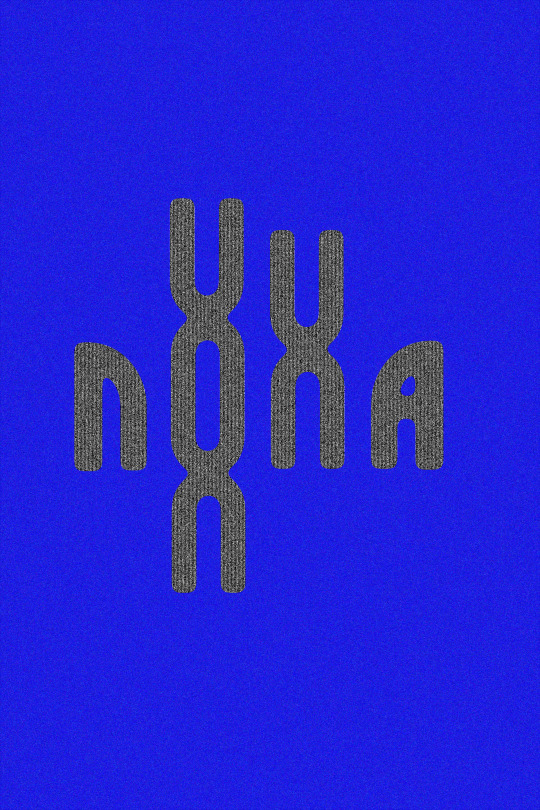
Despite the need for improvements, this is quite an improvment in comparison to my initial design (which I had planned to put on the front cover). I believe that my most recent is more innovative.

Visuals


Made in a Free World
In order to raise awareness about the role that slave labour plays in free-market supply chains from raw materials to products, Slavery Footprint has designed an interactive online site titled Made in a Free World. The website illustrates how personal and societal complicity contribute to global slavery, specifically in the context of the exploitation of the Global South. This website served as a major source of inspiration to me, both in terms of the design and the content. Despite the fact that I intend to write and design an editorial, I was nevertheless moved by how they utilise UX/UI design; it draws you into a false sense of comfort, with colourful graphics and pleasant interactive designs, almost as if to to make you oblivious to the fact that you are reviewing your consumption, and by the end of the survey, you are met with a number of enslaved people that work for you, 18 slaves work for me according to their system. I feel motivated by the potential of critical design, as well as how design can serve such an essential role in raising social consciousness. This information has been valuable to me for considering the harm that objects pose as 'acceptable' forms of slavery, and how I can translate this to my audience.
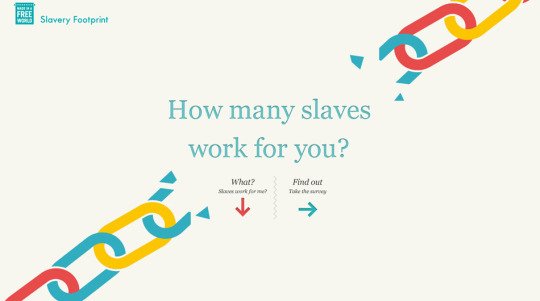



Made in a Free World. (2011). Slavery Footprint. HTML 5 website.
Tuesday Tutorial
Today I attended our Tuesday tutorial session. I spoke about my intent to research the degrowth movement, and I felt from the reactions I recieved that I had identified an appropriate model. This could be for the fact that degrowth is more solution-based and has the potential to impact the growth of our economy, therefore impacting our accumilation as a society. Overall, I benfitted from outlining my development and weekly objectives, such as finalising the writing for my editorial and providing first instances of my design, as I recieved helpful feedback in return. A particularly memoriable critique was in regards to a typographical test I had been working on; a member of my tutorial group mentioned that he was initially confused by the 'X' in the title of my book, 'Noxa,' believing it to be the letter 'V'. I have in response made modifications to the design, including adjusting the height and width of each letter, which initially I had not done. As a dyslexic who often struggles with typography, I am quite appreciative of the thoughtful input I received. I am looking forward to next week's session.
0 notes
Text
Weekly Updates
In consideration of my limited time, I have opted to post my journal updates in weeks rather than days. Each blog post will be at least 300 words long, documenting my efforts in writing, design, and the advice I receive from tutors. Similarly, I will conduct my artist research and any gallery visits in this format.
0 notes
Text
Update to Anthology
In this section, I will discuss how my proposed project has progressed and what you may expect from the post-production stage. My research findings have indicated that violence and the human condition are inextricably linked, and frequently manifest in tangible forms, such as guns and other devices designed to inflict harm. My project will place an emphasis on this subject, yet my editorial writing has changed. As a designer, I intend to criticise significant issues within our culture, and my research into discursive design has equipped me with many learning materials to do so. 'Silent violence', as Paola Antonelli has labelled it, is a criticism of our current material culture; she understands how design contributes to sustainability emergencies and humanitarian crises, and clearly reveals this via her academic writings. I intend to write about objects, and most particularly, the multiplicity of harm. How it has the potential to slaughter, how it has the potential to dehumanise, and how it has the potential to disrupt our ecosystems.
Project Proposal
Project Noxa is a by-product of my own anxious thoughts regarding our consumer-driven culture and capitalist economy. I knew from the onset of this project that I wanted to emphasise the complexity of our connection with design, and after conducting additional research, I have adjusted the emphasis to how our engagement with material culture continues to diverge. Whether we are conscious of it or not, we are all complicit in the deterioration of our environment and the exploitation of the Global South, which has been abused for its resources for centuries; dominion over
the developing nations has contributed to the formation of an unsustainable global hierarchy. I intend to archive objects I consider to be exceptionally reflective of the range of human violence, from lethal devices to a universally-enjoyed beverage, I aim to investigate the breadth of material culture and how it bleeds into violence, ecological harm and labour exploitation. I will ultimately decipher long-term solutions that are both sustainable and ethically responsible. This will formthe basis of the designed editorial, Noxa; it will incorporate both academic writing and considerations of design, its prime objective being to direct the reader on a course of understanding. I want to implement a framework that will potentially encourage my audience to undergo a re-evaluation of how they consume.In addition to this, I want to dedicate a portion of time I have to the creation of a ceramic piece; I intend to construct a two-piece plaster mould of a handgun that will serve as a prototype for a variety of ceramic objects, capturing both the beauty and brutality of our material culture.
Statement of Work
I will assume the roles of fine artist, editorial designer, researcher, editor, 3D designer, and author.
Objectives
- A designed editorial / self-published book
- 50+ pages, featuring 10 or more so objects
- A written submission of 4000+ words
- 20+ key references
- Practical implementation
- Design consistency
- Exposing how severe the circumstances are
- Improving impulse management via awareness
- Environmentally bengin
Key Deliverables
- Designed Editorial
- 3D prototype / ceramic piece
- Concept art
Time Beginning
- Two weeks spent conducting research and
compiling reading material
- Two weeks writing, editing, and designing
- Three weeks designing editorial, ceramic
cast, and folio
Antonelli, P. Et al. (2015). Design and Violence. The Museum of Modern Art.
0 notes
Text
26th April: Tutorial and Visit to the British Museum
Tutorial
Due to a COVID among faculty members, we had to meet our tutor via Teams for the first session. Regardless, it was a great session for constructive thought, and it assisted me in considering my next actions. I brought up the progress of the written portion of my project and was eager to discuss it with my tutor and support team member via Google docs.
Written work from this week can be accessed here.
During the session, I mentioned that I have been seeking more effective ecological frameworks that address the issue of object accumulation. I brought up minimalism in particular, as it is a framework and lifestyle choice that is directly against accumulation, yet my tutor seemed to be sceptical of minimalism. I believe I must investigate minimalism as a discipline more since, as my tutor mentioned, not everyone can be minimalistic; it is a lifestyle choice that is still inaccessible to a majority of people. Additionally, it was great to be paired with someone who was researching a related subject; I have written about sustainability and humanitarian emrgencies in the fashion and textiles industry, and she is undertaking a similar project proposal that examines consumer guilt. After the meeting, my team member and I started working on a Miro board, which I consider a great method to communicate and showcase our progress.
A snippet of our board from later that May...
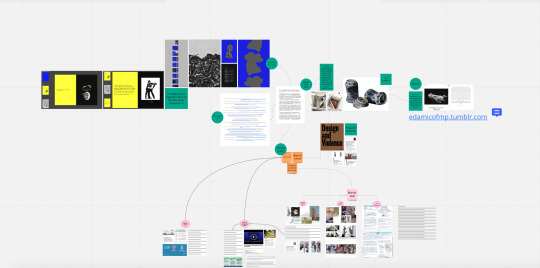
The British Museum
I then decided to visit the British Museum as a source of inspiration. However, I soon came to realise objects of harm may be found almost anyplace, including our museums. As I visited the Africa section, where I came upon the Benin Bronzes. These exquisite bronze-cast statues have been in production since the 16th century, yet many of the original bronzes were looted during the Scramble for Africa by the colonisers of Benin (now present-day Nigeria). Despite the fact that the British Museum makes its questionable past apparent on a plaque alongside the bronzes, I subsequently learned that the British Museum continues to disregard Nigeria's requests to return its national and cultural artefacts. As well as that, I visited the Gebelein Man, otherwise known as Ginger. It was quite surreal to see a human corpse lying, surrounded by ceramics as a form of exhibit. Simply stated, it enabled me to reflect on the concept of an object and how, unsettlingly, our use of objects has desensitised us to other humans.
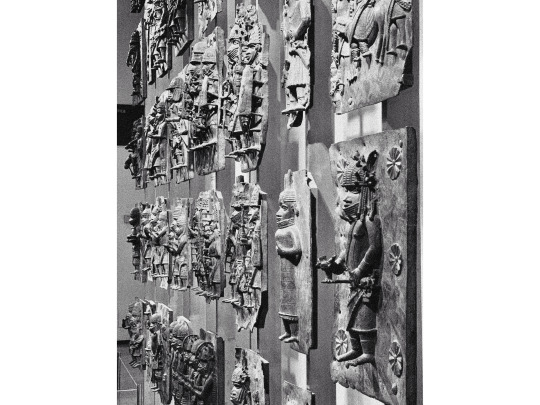
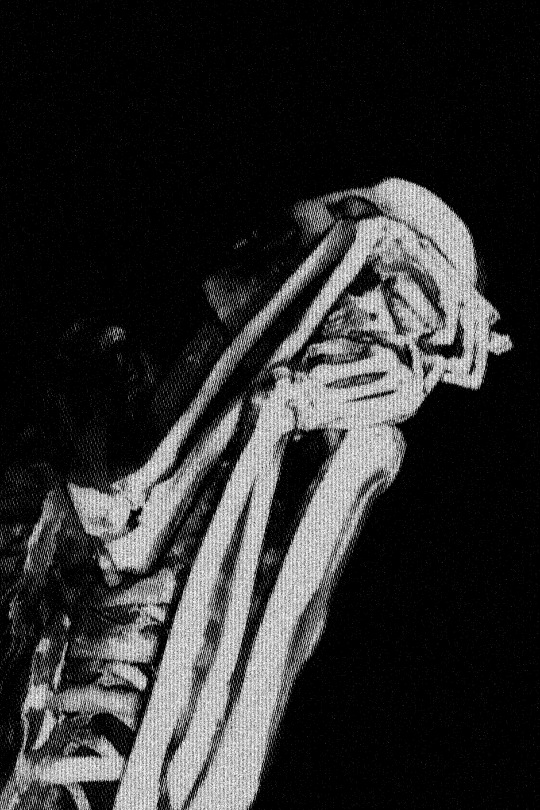

Benin Bronzes. (2022). The British Museum, Africa. Public exhibit.
Gebelein Man. (2022). The British Museum, Ancient Egypt. Public exhibit.
0 notes
Text
First Week Back and Changes to my Set Brief
Today we were given a lecture that consisted of vital information and insights on successful design projects. Program director Dannah Abdulla was in charge of the lecture, and as I had hoped, Dannah Abdulla presented a range of resources at our disposal, from references to open-source projects. Consideration for ethical design methodologies were highlighted in particular, and there was a broad variety of socially-engaged design projects that had employed design to connect disadvantaged communities and break down boundaries, rather than commercial purposes. This was a great second chapter to this project, since the beginning I have been placing more emphasis on the negatives when, in fact, design is a neutral tool, and it is us who have the capability to change its principles. Projects in particular I took note of were Conflict Kitchen, a mini takeaway restaurant that showcases cuisine only from countries America is in conflict with, created by Jon Rubin and Dawn Weleski in 2010, and additionally, Gran Fury's designs for HIV awareness and advocacy from the mid 80s to early 90s, which are now internationally recognised for their messaging.


Rubin, J. Wleski, D. (2010). Conflict Kitchen. Restaurant. America, New York, New York.
Fury, G. (1988). Silence = Death. ACT UP. Political poster.
Conflict kitchen > cultural exchange, be part of the conversation
Challenges biased representation
Virtual reality goggle box
Using products to bring together cultural exchanges
Halal hotdogs > employing local communities
First Session
Today we returned to university for the first time since the previous semester. I felt considerably optimistic, since we had been assured that we would have additional time in the studio, including time with tutors, seminars, and workshops. In a session on submissions details, we learnt what to provide as well as how to incorporate material into our blogging, such as evaluations, mock-ups, and general progress. It was essentially a catch-up on everything that needs to be submitted as well as a rundown of what will get us additional credits.
Notes:
- Final evaluation should be submitted
- An effective strategy. Clear research that leads to realisations that can subsequently be creatively used to design.
- Theoretical and specialist influence
- D&AD, New Blood must be present!
- The FMP itself (Major Practice Project) *Must be present!
- 500 word FMP outline description *Should be present
- Online journal as a blog, website or PDF Must be present!
- Self evaluation form as a PDF *Should be present!
- Create a final summary entry in your journal so that they can see precisely what you've produced / 500 word outline description
Tutor discussion
Given the chance to talk to a tutor regarding my project was certainly a highlight of the day. My project received enthusiasm and some excellent feedback I will need to consider. The experience of discussing my proposal has given me confidence, as well as led me to become more aware of the lacking specifics of my project that will need to be addressed, such as the question of whether or not my editorial will be my primary project. I shall reassess my focus on the discursive attribute of my project after today, since, despite my desire for it to remain an aspect of my project, I recognise that my editorial has become more significant.
Notes:
Mark Wallinger electric chair
Andy Warhol electric chair
Homemade prison weapons
Legitimate violence vs non-legitimate violence
Monopoly of Violence documentary
Helmut Smits’s The Real Thing
What is the insight? What is the material? What is the story?
20th-23rd April
1. After a prolonged hiatus, I was eventually able to access the ceramics studio at university. It was an incredibly exciting opportunity, and I learned a considerable amount about the mould process of slip-casting. I began by pouring plaster into a bucket of water and waited for it to be submerged. After submerged, I started mixing the plaster until it had the consistency of custard. Once it had reached a custard consistency, I poured it into a make-shift mould held together by wooden boards with my toy gun centre. Once settled, it was placed in the dry cupboard. The second effort resulted in the completion of both halves.
2. After the lid of the mould was finalised, I was able to continue with my first slip-cast of the gun. This operation was fairly uncomplicated and I'm certain that I'll be able to replicate this procedure given the information I've gained. I was able to remove the initial cast the following morning, and despite some imperfections, I am fairly satisfied with the mould. I aim to create a final cast before my hand-in, but for now I intend to focus on my final piece, which is my designed editorial. As stated in the preceding entry, I want to experiment with discursive design; nevertheless, this will be a less essential consideration of my project, as I believe my book will place more emphasis and contextual understanding of how objects may be violent or incite harm.

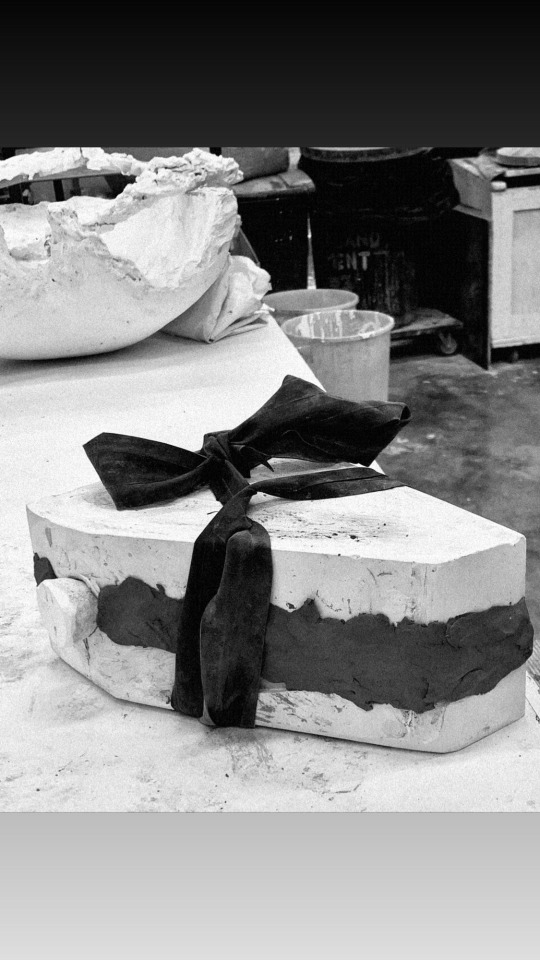

0 notes
Text
7th-11th April: Applying Theory and Reading Materials
As I have come to realise, I need to incorporate the appropriate theory into my project. I want to provide an alternative to our destructive lifestyles, and I believe sustainability frameworks would serve as a great point of action. I have begun reading The Circular Economy and the Global South (2019) by Patrica Schroder, Manisha Ananntharaman, Kartika Anggraeni, and Timothy J. Foxton. It places a particular emphasis on identifying circular methods to achieve sustainability in growing regions such as those that have a longstanding experience of being subjected to inequality and exploitation by the Global North.
“The issue of resource mismanagement resulting in an increasing quantity of solid waste can be attributed to our linear economy of 'take, make, dispose'. While historically, these problems have been caused by the now developed countries, the challenges have also emerged for developing economies which are following the linear economic development trajectory of countries in the Global North. The alternative development approach is a circular economy (CE), which, so far, remains less understood in the context of developing countries.” - Patrica Schroder, et al
“Without specific consideration of the social implications there will be and losers in the circular economy, depending on whose version the dominant and prevailing policy paradigms. The losers will not only who fail to make the transition from the linear to circular system but also potentially marginalised groups already working in the informal CE.” - Patrica Schroder, et al
This has been an engrossing read, and has aided me in considering more of the underlying harms within our institutions and economic frameworks. The circular economy is often presented as a framework that might pave the way for possible advancement and social mobility; nevertheless, this is a paradigm that is affected by capitalist principles, which leads to almost identical forms of exploitation that developing nations already endure. For instance, despite adapting a cyclical marketing strategy for its products, H&M continues to abuse the Global South by exploiting gaps in international legislation.
Schroder, P. Et al. (2019). The Circular Economy and the Global South. Milton Park, Abingdon, Oxfordshire.
0 notes
Quote
But if garbage is indeed so central to knowledge, how do we find a way into the domain of the leftover, the discarded - in other words, how can we see what knowledg uses up and throws away?
Scanlan, J. (2005). On Garbage. Reaktion Books LTD. University of Saint Andrews, Scotland.
0 notes
Quote
The anthropologist Mary Douglas famously noted in her study of pollution taboos, namely that dirt is a disorder: 'Where there is dirt there is system. Dirt is the by-product of a systematic ordering and classification of matter, in so far as ordering involves rejecting inappropriate elements
Scanlan, J. (2005). On Garbage. Reaktion Books LTD. University of Saint Andrews, Scotland.
0 notes